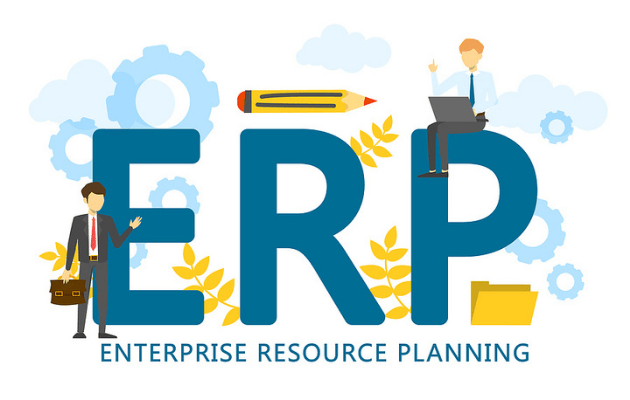ERP Project Delivery - Lessons from the Front Line
I recently worked with a client whose ERP project delivery went… (how can I put this delicately…) less than perfectly.
Nobody wants to see a project fail, and saying 'I told you so' is never constructive. However, looking back on the most difficult ERP projects does provide an opportunity for everyone - customers, vendors and consultants alike - to learn valuable lessons.
In this particular case, the client didn’t manage to establish adequate governance and project delivery roles or structures at the outset, hampering subsequent decision-making, risk and issue management. Additionally, the project team was scattered across several sites, divisions and countries, with project managers in different time zones pulling in different directions.
Unfortunately, members of the client's leadership team found themselves unable to free up the necessary internal resources for the project, so external contractors were tasked with making design decisions on behalf of the business. At the same time, inexperienced internal resources were assigned to specialist project delivery roles, further disadvantaging the project team.
The issues above contributed to a chaotic environment that was beset with disagreements, delays and resource reassignments, and frustration among the project team and its stakeholders. The project was effectively paralysed.
The client’s journey leading up to the ERP implementation was by the book. They undertook robust ERP strategy and selection projects; they designed and signed-off harmonised future-state business processes; they built leadership buy-in and co-opted some extremely talented resources from the business. Unfortunately, however, a few significant problems in establishing the subsequent implementation project eroded those foundations.

So, what are the learnings from this?
1. Establish effective project governance structures
Consult good practices and form a Steering Committee with appropriate representation, clear roles and real decision-making nous. You may need additional committees or boards, depending on the size and scale of your organisation (e.g. change authority, project assurance and architecture governance). Establish project governance and management routines that ensure status reporting is timely and effective, issues and risks are monitored and escalated appropriately, road-blocks are removed quickly, business changes are managed and benefits are achieved.
2. Actively manage risks
Don't just identify and log risks; they need to be actively assessed, owned, actioned, monitored and escalated in line with a clear risk management framework. It's easy to populate a risk register, but real risk management is not just a simple box-ticking exercise. Don't underestimate the importance of doing this well.
3. Assign your best people
It's difficult to pull your best resources out of the business for six, 12 or even 18 months, but your top talent is key to getting the best project outcomes. It's tempting to assign less experienced resources to reduce the impact on Business as Usual (BAU) but this ultimately means weaker or slower decision-making and a potentially sub-optimal solution. Sticking to this principle requires very strong leadership commitment across the business, as some managers will resist this.
4. Dedicate and backfill key project resources
Don't expect Process Owners or Workstream Leads to split their time between project and BAU activities; this isn't fair on anyone. It is simply impossible to maintain progress against a project plan when key members of the team are trying to juggle day-to-day business and project priorities. The cost of back-filling dedicated resources should be part of your business case. If you can't afford to do this, think very carefully about starting the project.
5. Don't expect external resources to represent the business
Experienced contractors can plug important capability gaps in areas such as project management, business analysis, data migration and testing, but don't expect them to represent your business as Process Owners or Subject Matter Experts (SME)s. Contractors can't be expected to come in cold and understand your organisation inside-out, and doing so can result in poor decision-making and lengthy delays. Internal resources need to be the ones making calls about business requirements and processes, drawing on their knowledge, experience and stakeholder relationships.
6. Don't assign inexperienced resources to specialist project roles
Just as external contractors can't be expected to represent your business, internal resources should not be expected to take on specialist roles for which they're not qualified or experienced. Of course, projects represent an opportunity for employee development, but make sure you assign resources with a track record of successful ERP delivery to lead roles in project management, architecture, data migration, change management and training. This is where external talent can make a really positive difference.
7. Co-locate your project team
Establish a physical Project Office and co-locate as many of your project resources as possible, including vendor representatives. This doesn't mean you can't have off-shore delivery resources or stakeholders located elsewhere, but focusing the team in one place makes collaboration, decision-making and issue resolution much quicker and easier. It's amazing how much time can be saved through ad-hoc conversations amongst a collaborative project team.
8. Document your future-state process and carry them through to ERP design and delivery
We all know that shiny new systems aren't a magic bullet. Getting the most out of a new ERP system requires well-designed business processes and, often, substantial business change. If you've gone to the expense of designing and documenting your 'to-be' business processes, make sure they are fed into and referenced throughout your ERP delivery project, from solution design to configuration, testing and user training. If well-designed processes fall by the wayside, your solution may fail to deliver the intended business benefits.
Common to all of these lessons is a requirement for strong leadership. ERP projects are major undertakings and can only succeed if the leadership team - as a whole - is bought in and committed to making the project a success.
The consequences of ignoring these lessons are often all too clear: missed deadlines, blown budgets, strained relationships, stakeholder disengagement, unrealised benefits, reputational damage… These can have a huge impact on the business, both financially and operationally.
ERP project delivery is never easy, but avoiding common mistakes at the outset will help maximise your chances of success.
This blog was written by Edward Abrahamson Principal Consultant at Lumenia. For further information please send an email to Edward Abrahamson.


